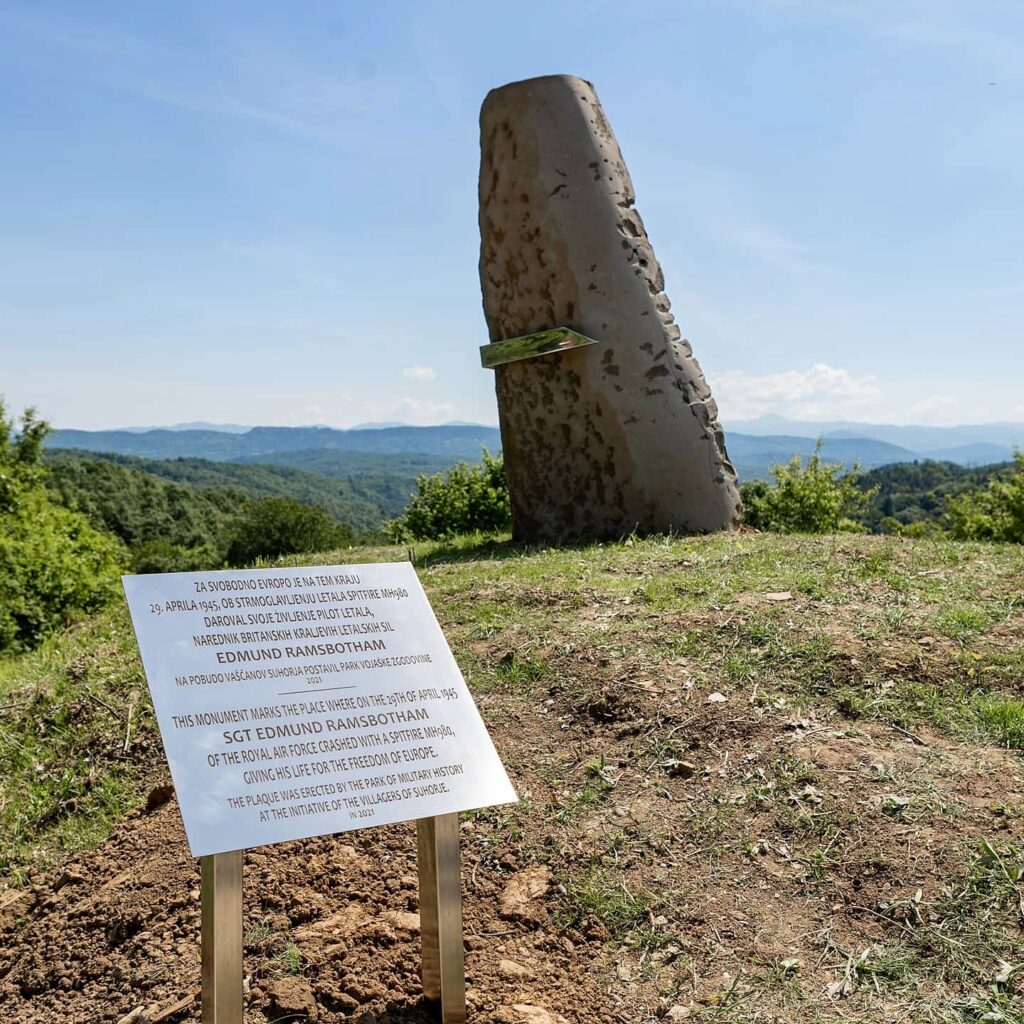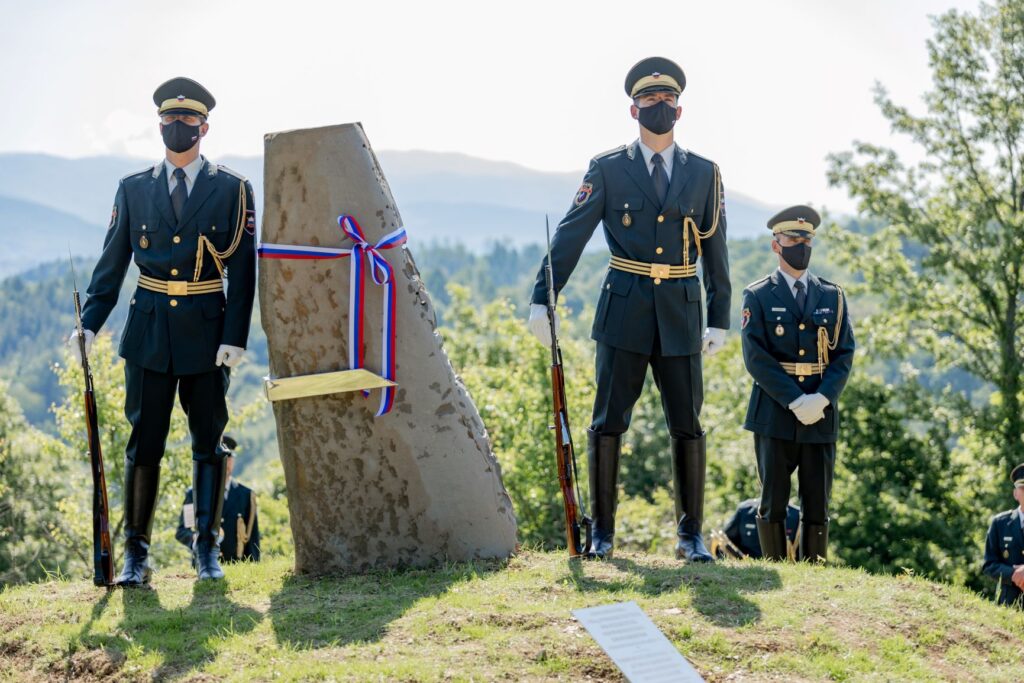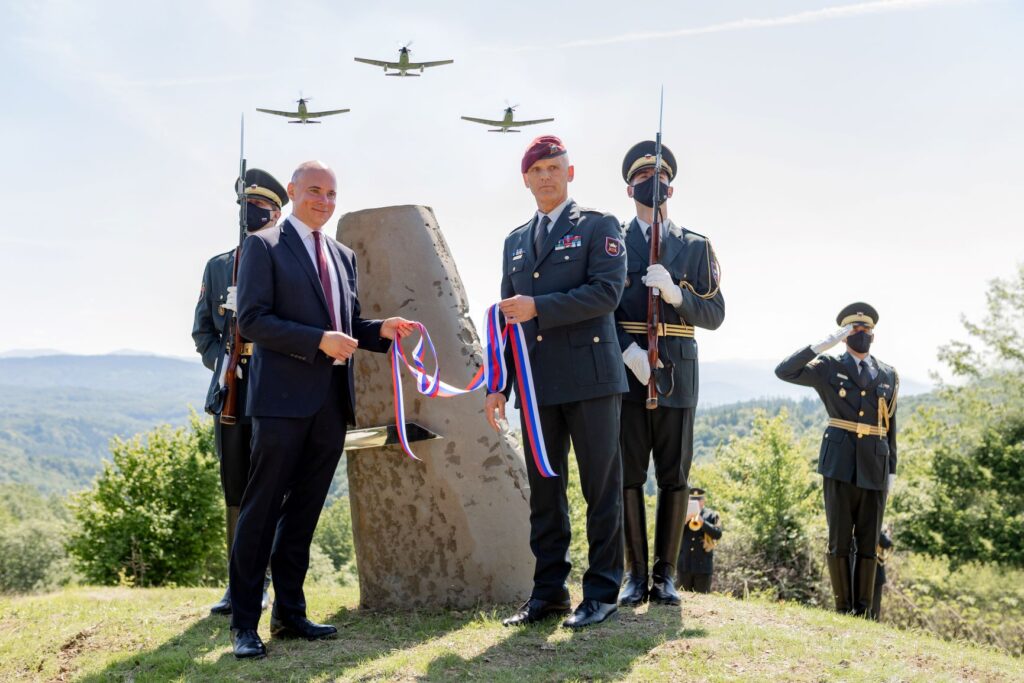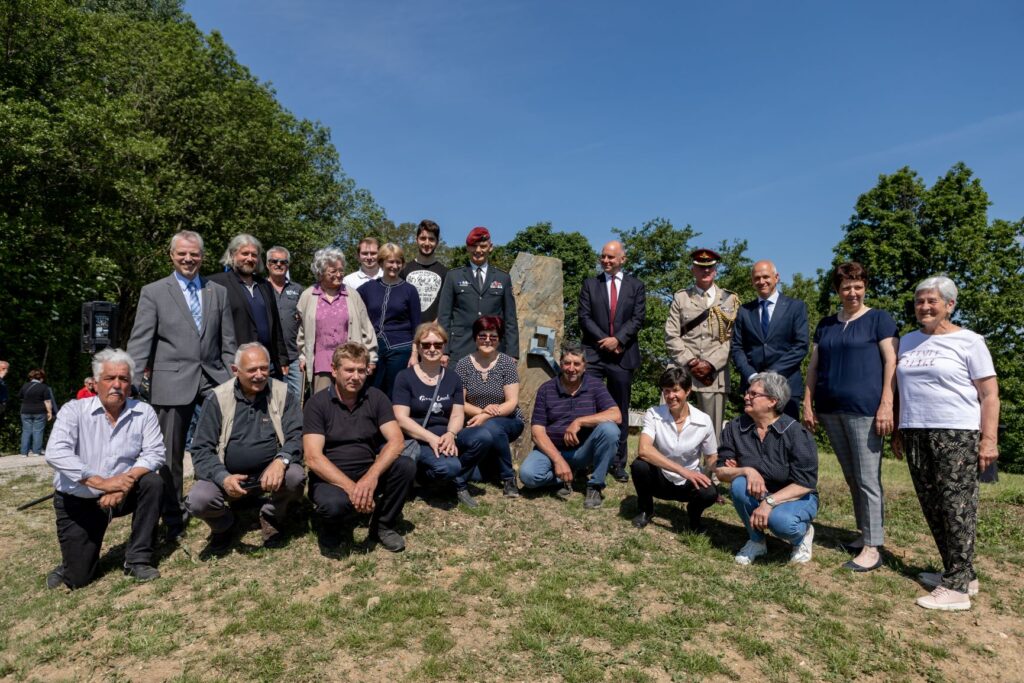Spomenik na Suhorju
- Park vojaške zgodovine Pivka
- Utrdba Alpskega zidu na Primožu
- Dina Pivka
- Ekomuzej Pivških presihajočih jezer
- Učna pot po čistilni napravi Živa v Pivki
- Kaverna iz I. svetovne vojne
- Šilentabor
- Krajinski park Pivških presihajočih jezer
- Žagarjev mlin in žaga
- Prikaz tradicionalnih obrti
- Pivški križi
- Kmetija Petrovi
- Etnološka zbirka na Zgonarjevi domačiji
- Šobčeva domačija
- Posestvo Ravne
- Park Škocjanske jame
- Kobilarna Lipica
- Pomnik miru in razgledni stolp Cerje
- Postojnska jama
- Križna jama
- Predjamski grad
- Muzej krasa – Notranjski muzej Postojna
- Grad Prem
- Posestvo Grad Prestranek
- Smrekarjeva domačija
- Notranjski regijski park
- Rakov Škocjan
- Antonijev rov
- Vetrovnik AERODIUM Logatec
- Grad Snežnik
- Vojaški muzej Tabor
- Štanjel
- Partizanska bolnica Franja
- Partizanska bolnica Zalesje
Tik pred koncem druge svetovne vojne, 29. aprila 1945 je pri vasi Suhorje, na robu Brkinov, strmoglavilo britansko lovsko letalo Spitfire MH980, pri čemer je izgubil življenje pilot letala, narednik britanskih kraljevih letalskih sil Edmund Ramsbotham. V zaključnih vojnih operacijah so britanski lovci kot pomoč jugoslovanskim partizanom zalezovali nemške kolone in vlakovne kompozicije. Narednik Ramsbotham tisti pomladni dan ni imel sreče – najverjetneje je bil ob nizkem preletu zadet ob eksploziji tovornjaka s strelivom ter je za tem strmoglavil. Truplo mladega angleškega pilota so vaščani Suhorja dostojno pokopali na vaškem pokopališču. Kmalu po vojni so britanske vojaške oblasti posmrtne ostanke prekopale na vojaško pokopališče v Beogradu, kjer počiva še danes. Kljub temu na Suhorju spomin na ta tragični dogodek ni nikoli povsem zamrl in prav iz vaške skupnosti je prišla pobuda, da bi se v letu 2020, ob 75. letnici padca, postavilo spomenik. Vaščani so se obrnili na Park vojaške zgodovine, ki se veliko ukvarja prav z dediščino padlih zavezniških letal ter sodeluje tudi z britanskim veleposlaništvom. Zaradi epidemije je bila lanska okrogla obletnica sicer zamujena, zato pa je bilo odkritje spomenika 4. junija 2022 toliko bolj slovesno.
Just before the end of the Second World War, on 29 April 1945, a British Spitfire MH980 fighter airplane crashed on the edge of the Brkini Hills near the village of Suhorje, killing its pilot Sergeant Edmund Ramsbotham of the RAF. In the final military operations of the war, British fighters helped Yugoslav partisans by hunting down German columns and trains. Sergeant Ramsbotham did not have luck on his side on that spring day – he was probably hit when a munitions truck exploded during a low-altitude pass, crashing soon after. The body of the young English pilot was given a proper burial by the locals of Suhorje in the village cemetery. Soon after the war, British military authorities transferred his remains to the military cemetery in Belgrade where they lie to this day. Nevertheless, the memory of this tragic event never faded in Suhorje and it was the village community that suggested last year, on the 75th anniversary of the crash, that a monument should be erected. The villagers turned to the Park of Military History which has a lot of experience dealing with the heritage of downed Allied aircraft and also cooperates with the British Embassy. Last year’s important anniversary went by uncelebrated due to the global epidemic, which is why this year’s monument unveiling was organized to be that more solemn.

Spomenik na Suhorju. Foto: Simon Avsec
Avtor spomenika je akademski kipar magister Jurij Smole, docent na Akademiji za likovno umetnost in oblikovanje, ki se je z velikim veseljem odzval vabilu Parka vojaške zgodovine, da pomaga oblikovati načrt za postavitev spomenika. In ne samo to – tako lokacija, kot zgodba padlega letala sta ga prevzeli do te mere, da se je sam lotil njegove izdelave. Spomenik, ki je postavljen prav na kraju tragične nesreče, je iz lokalnega peščenjaka in upodablja rep letala Spitfire. Ploščat kamen velikega formata ima dve popolnoma različni plati: grobo stran z ostanki naravne teksture in grobimi sledovi obdelave, ki predstavlja destrukcijo sovražnika ter fino obdelano, zbrušeno stran, ki predstavlja lepoto jeklene ptice, letala Spitfire, ki ga mnogi opisujejo kot eno najlepših letal. Naravni kamen objema stilizirana oblika roke iz spoliranega inoxa, ki simbolizira pilotov boj za življenje.
The author of the monument is the academic sculptor and Master of Arts Jurij Smole, assistant professor at the Academy of Fine Arts and Design, who happily responded to the invitation by the Park of Military History to help come up with a design for a new monument; and not only that – he was so taken with the location and the story of the downed aircraft that he took on the task of making it himself. The monument, which stands at the exact location of the tragic accident, is made of local sandstone and represents the tail of a Spitfire. A large flat stone displays two completely different sides: one is imperfect, revealing some of the rock’s natural texture along with traces of rough stonework, which represents destruction caused by the enemy, while the other is finely-worked and polished, representing the beauty of the steel bird, the Spitfire, considered by many to be one of the most beautiful aircraft ever made. The natural stone is hugged by a stylized hand made from polished inox steel which symbolizes the pilot’s struggle to survive.

Še nekaj besed o pilotu. Narednik Edmund Ramsbotham je bil rojen 17. maja 1923 v vasi Backworth v Northumberlandu očetu Edmundu in mami Annie. O njegovi vojaški karieri vemo še zelo malo. Pripadal je 249. Eskadrilji RAF-a – britanskih kraljevih letalskih sil, ki velja za eno najuspešnejših lovskih enot kraljevega letalstva. Enota je bila ustanovljena že avgusta leta 1918, a je svojo slavo dosegla v drugi svetovni vojni – najprej v Bitki za Britanijo, potem pa še nad Malto, Sicilijo, Italijo, Albanijo, Balkanom in prav ob koncu vojne nad slovenskim ozemljem. Narednik Ramsbotham je bil zadnja vojna žrtev te slavne eskadrilje.
Finally, a few words about the pilot. Sergeant Edmund Ramsbotham was born on 17 May 1923 in the village of Backworth in Northumberland to father Edmund and mother Annie. We know very little about his military career. He belonged to the 249th Squadron of the RAF, which is considered one of the most successful fighter units of the Royal Air Force. The unit was established as early as August 1918, but it became famous in the Second World War – first in the Battle of Britain and then in battles over Malta, Sicily, Italy, Albania, the Balkans, and, right at the end of the war, over Slovenian territory as well. Sergeant Ramsbotham was the last victim of war from this famous squadron.

Načelnik Generalštaba Slovenske vojske generalmajor Robert Glavaš ter namestnik veleposlanice Združenega kraljestva g. Paul Jancar (levo). Foto: Simon Avsec
Kot slavnostna govornika na slovesnosti odkritja spomenika sta nastopila načelnik Generalštaba Slovenske vojske generalmajor Robert Glavaš ter namestnik veleposlanice Združenega kraljestva g. Paul Jancar. Britansko vojsko je na slovesnosti zastopal obrambni ataše podpolkovnik Christopher Day. Poseben poklon spominu nesrečnega pilota so namenili tudi letalci 15. letalskega polka Slovenske vojske, ki so s skupino letal Pilatus PC-9 ob odkritju spomenika preleteli prireditveni prostor.
The two keynote speakers at the monument unveiling ceremony were the Chief of the General Staff of the Slovenian Armed Forces, Major General Robert Glavaš and the Deputy Head of Mission at the British Embassy, Mr Paul Jancar. The British Army was represented by the Defence Attaché, Lieutenant Colonel Christopher Day. A special tribute to the memory of the unfortunate pilot was made by the airmen of the 15th Regiment of the Air Force of the Slovenian Armed Forces who carried out an overflight with a group of Pilatus PC-9 aircraft during the monument unveiling ceremony.

Vaščani Suhorja
